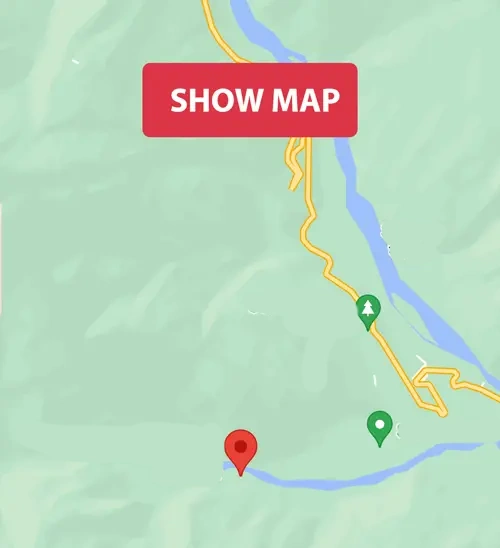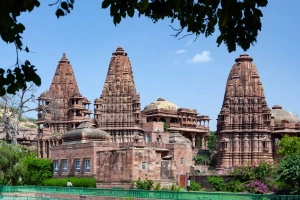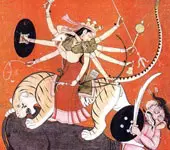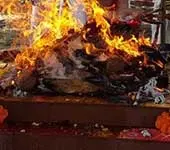Malaikottai Temple, Trichy - Discover Spiritual Bliss
Tiruchirapalli Rock Fort, also known locally as Malaikottai, stands as a historic fortress and temple complex erected upon an ancient rock. Positioned along the banks of the Kaveri River in Tiruchirappalli, Tamil Nadu, India, this structure is perched on an impressive 83 meters (272 ft) high rock. The complex houses two temples: the Ucchi Pillayar Temple, Rockfort, and the Thayumanaswamy Temple.
Uchi means top and Pillaiyar is the popular name of Ganapathy in Tamil. There are 420 steps leading to the top.
The rock resembles Nandi. a lion, an elephant, and Lord Shiva from various angles. The temple complex was developed over a period of 10,000 years. There are two cave temples here.
The Rock Fort accommodates five temples:
- Lalitankura Pallavesvara Griham, also known as the Upper Cave
- The Lower Cave
- Manikka Vinayakar temple, situated at the base of the hill, devoted to Lord Ganesha
- Ucchi Pillayar Temple, positioned at the summit, dedicated to Lord Ganesha
- Thayumanaswami Temple, Rockfort, often referred to as 'the lord who became the mother' is a sizable temple dating back to the 18th century. This temple is consecrated to Shiva and goddess Amman, featuring a shrine for the Nayaka-era saint Tayumanavar from the 18th century. The temple is on the way while ascending the steps to the Ucchi Pillayar Temple.
Legend
Ratnavati, a devout follower of the Lord Shiva, was expecting a child. In anticipation of the birth, her mother traveled to assist her despite the challenges posed by the swollen river Cauvery. Ratnavati resided on the north bank in Tiruchirapalli. Concerned about her mother's journey, Ratnavati sought divine intervention through prayer.
To her relief, she discovered her mother by her side as the time for childbirth arrived, ensuring a safe delivery. It was only later, when Ratnavati's mother inquired about how she managed the delivery alone, that the truth unfolded. The Lord had manifested in the form of Ratnavati's mother to aid her during the critical moment. It became evident that her actual mother had reached only after the river's floods had subsided.
In Tamil, Thayum ana translates to 'One who became the Mother.' This divine intervention led to a tradition of seeking the God's blessings for safe and uncomplicated childbirth.
The temple's original entrance was believed to face east, but it now points in the opposite direction. According to the legend, Sage Saramamunivar, a devoted follower of Lord Siva, cultivated a unique flower known as Javanti (in Tamil) in his garden for the Lord's worship. One day, he discovered a guard from King Parantaka Chola's palace taking the flowers. Despite the sage's complaint to the king about the theft, the monarch ignored it upon learning that the flowers were intended for his queen.
Heartbroken, the sage lamented to the Lord that he could no longer offer worship with the special flowers. In response, Siva, angered by the situation, averted his benevolent gaze from the capital city of Uraiyur. This resulted in a shower of sand falling on the city, where the king's palace was situated. Uraiyur's salvation came only after the frightened king and citizens fervently prayed to Vekkali Amman, a form of Parvathy, who then managed to appease the angered Lord.
The consort of Thayumanaswamy is Mattuvarkuzhal Amman.
Brahma is also there in this temple as Jwareswarar (one who cures fever).
Atop Uchi Pillaiyar's head there is a pit, and its origin is steeped in legend. Vibhishana, the demon king of Sri Lanka, received the idol of Ranganatha from Lord Rama on the condition that it should never touch the ground. Carrying it on his head, Vibhishana reached the banks of the Cauvery river near Tiruchirapalli. Tempted by the pure waters, he entrusted the idol to a young boy with a warning not to place it on the ground.
Eager for a dip, Vibhishana ignored the boy's repeated calls and found the idol grown to an immense size upon his return. Enraged, he chased the boy, striking him on the head. The boy transformed into the God Ganesha, revealing himself as Uchi Pillaiyar. The idol placed on the ground by Lord Ganesha is now revered as the presiding deity at the renowned Ranganatha temple in Srirangam.
History
The Rock Fort in Tiruchirapalli has a rich and storied history that spans several centuries. Here is an overview of the history of the Rock Fort:
- Ancient Times: The Rock Fort complex is situated on a massive rock that dates back to over 3 billion years, making it one of the oldest rocks in the world. The rock itself is a prominent geological landmark in the region.
- Pallava and Chola Dynasties: The earliest historical records indicate that the Rock Fort was used by the Pallava dynasty in the 6th century. However, it was during the Chola dynasty's rule in the 9th and 10th centuries that the fort and its associated temples were significantly developed.
- Vijayanagara Empire: The Rock Fort continued to be strategically important during the Vijayanagara Empire.
- Nayak Dynasty: In the 16th century, the Madurai Nayaks further fortified the Rock Fort and constructed the impressive Thayumanaswami Temple at the foothills.
- Maratha and Carnatic Wars: The Rock Fort played a role in the military conflicts of the 17th century during the Maratha and Carnatic Wars. The fort changed hands multiple times between the Marathas, the French, and the British.
- British Era: The British eventually gained control of the Rock Fort in the late 18th century. They used it as a military outpost and made certain modifications to the structures within the complex.
- Post-Independence: After India gained independence in 1947, the Rock Fort continued to be a significant cultural and religious site. The temples within the fort complex attract devotees and tourists alike.
Festivals
- 15 days Chithirai car festival
- 12 days Teppa Thiruvizha in Panguni
- Summer festival Vaikasi
- Navarathri in Purattasi
- Skanda Sashti in Aipasi
- 13 day Vinayaka Chaturthi festival
- Adipooram 8 days festival
- Tamil and English New Year
- Deepavali
- Pongal
How to reach Trichy

From Chennai:
- By Air: Trichy International Airport is well-connected with flights from Chennai. The flight takes approximately 1 hour.
- By Train: Chennai to Trichy trains are available regularly. The journey takes around 5-6 hours by train.
- By Road: Chennai to Trichy is well-connected by road. You can either drive or take a bus. The journey by road takes approximately 6-7 hours.
From Madurai:
- By Train: Trains from Madurai to Trichy are available. The journey by train takes around 2-3 hours.
- By Road: Madurai is connected to Trichy via NH45. The road journey takes approximately 3-4 hours by car or bus.
From Coimbatore:
- By Air: Trichy International Airport has flights from Coimbatore. The flight duration is around 1 hour.
- By Train: Trains from Coimbatore to Trichy are available, and the journey takes around 4-5 hours.
- By Road: Coimbatore is well-connected by road to Trichy. The journey by road takes around 5-6 hours.
From Bangalore:
- By Air: Trichy International Airport has flights from Kempegowda International Airport in Bangalore. The flight duration is approximately 1 hour.
- By Train: There are trains from Bangalore to Trichy, and the journey takes around 8-9 hours.
- By Road: Trichy is connected to Bangalore via NH44. The road journey takes approximately 6-7 hours by car or bus.

English Topics
Temples
Click on any topic to open
- 71 Ahobilam - Lord Narasimha's Sacred Abode
- 70 Malaikottai Temple, Trichy - Discover Spiritual Bliss
- 69 Jambukeswarar Temple, Trichy
- 68 Vaitheeswaran Koil - A Healing Pilgrimage
- 67 Dwaraka and Somnath
- 66 Khidkali Mahadev Mandir
- 65 Pongu Sani Temple, Thirukollikadu
- 64 The Unique And Fascinating Jharni Narasimhaswamy Temple, Bidar
- 63 Yamunotri: A Spiritual Haven in the Himalayas
- 62 Anantha Padmanabha Swamy Temple - Fascinating Legends
Please wait while the audio list loads..
30
Ganapathy
Shiva
Hanuman
Devi
Vishnu Sahasranama
Mahabharatam
Practical Wisdom
Yoga Vasishta
Vedas
Rituals
Rare Topics
Devi Mahatmyam
Glory of Venkatesha
Shani Mahatmya
Story of Sri Yantra
Rudram Explained
Atharva Sheersha
Sri Suktam
Kathopanishad
Ramayana
Mystique
Mantra Shastra
Bharat Matha
Bhagavatam
Astrology
Temples
Spiritual books
Purana Stories
Festivals
Sages and Saints



